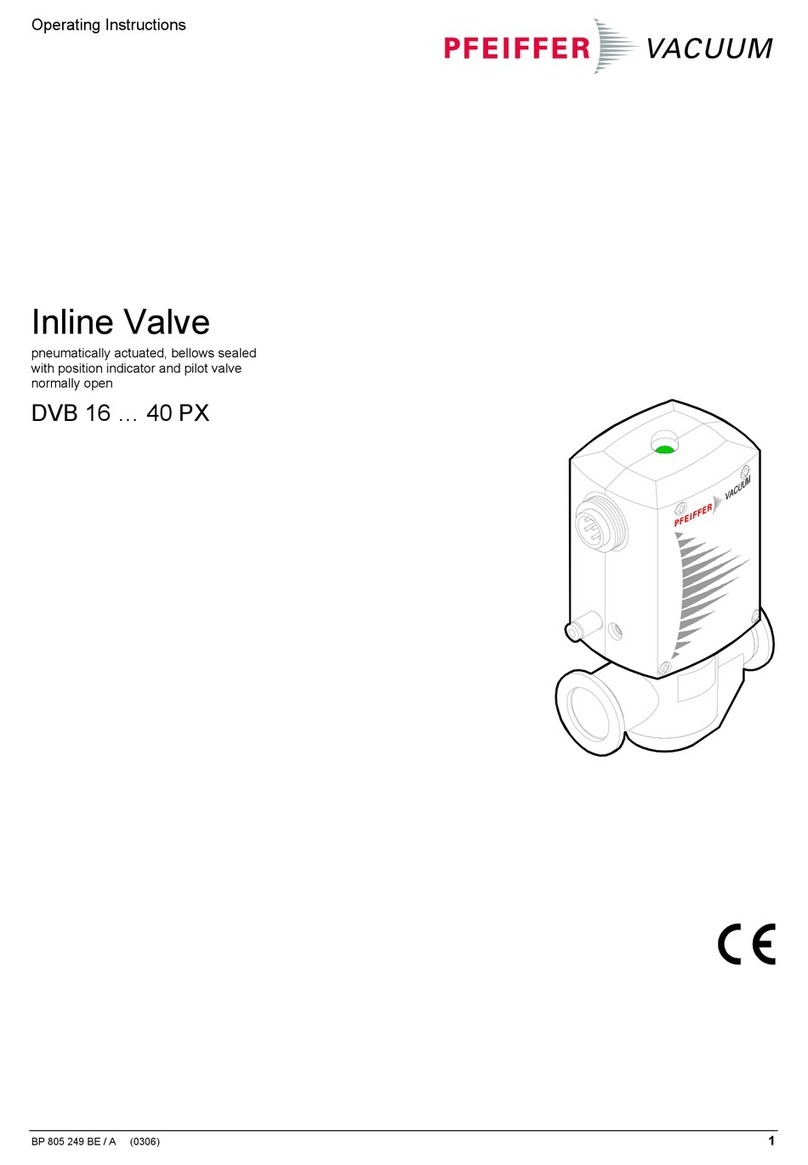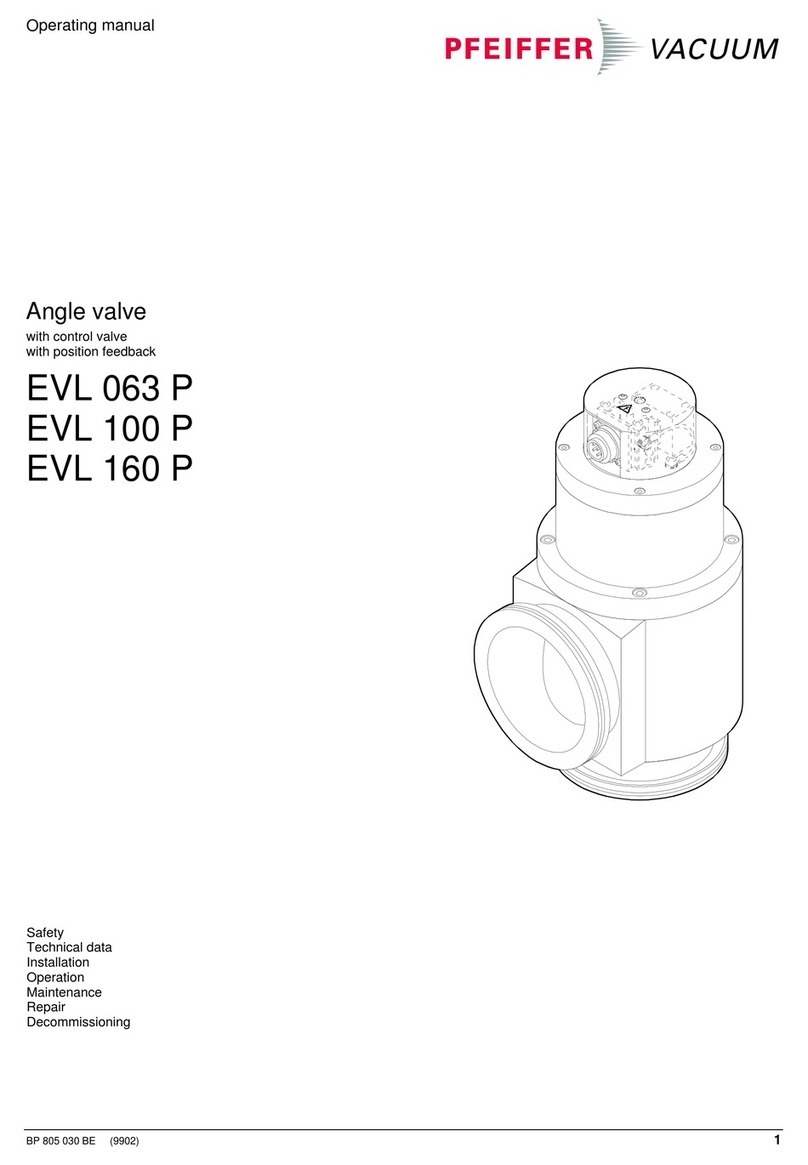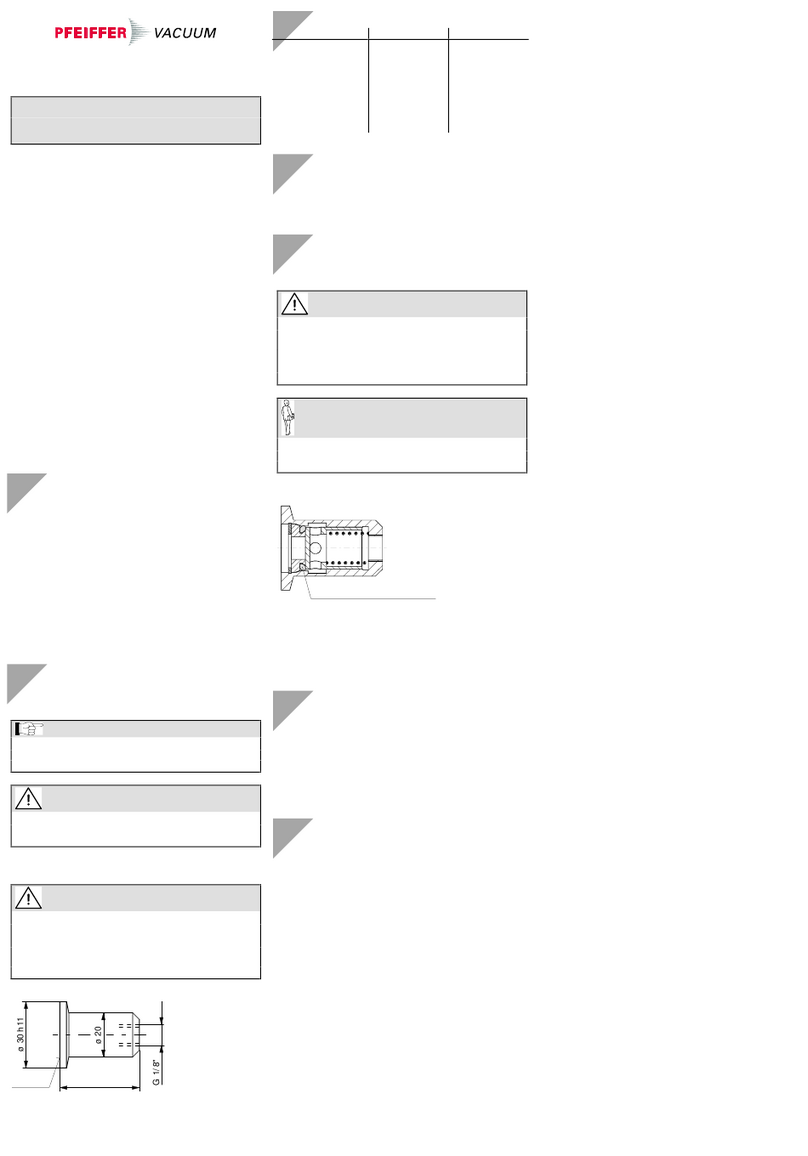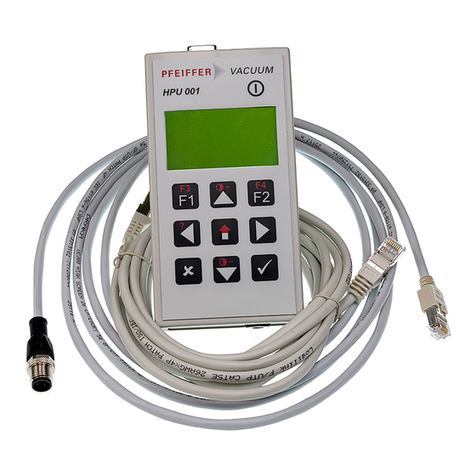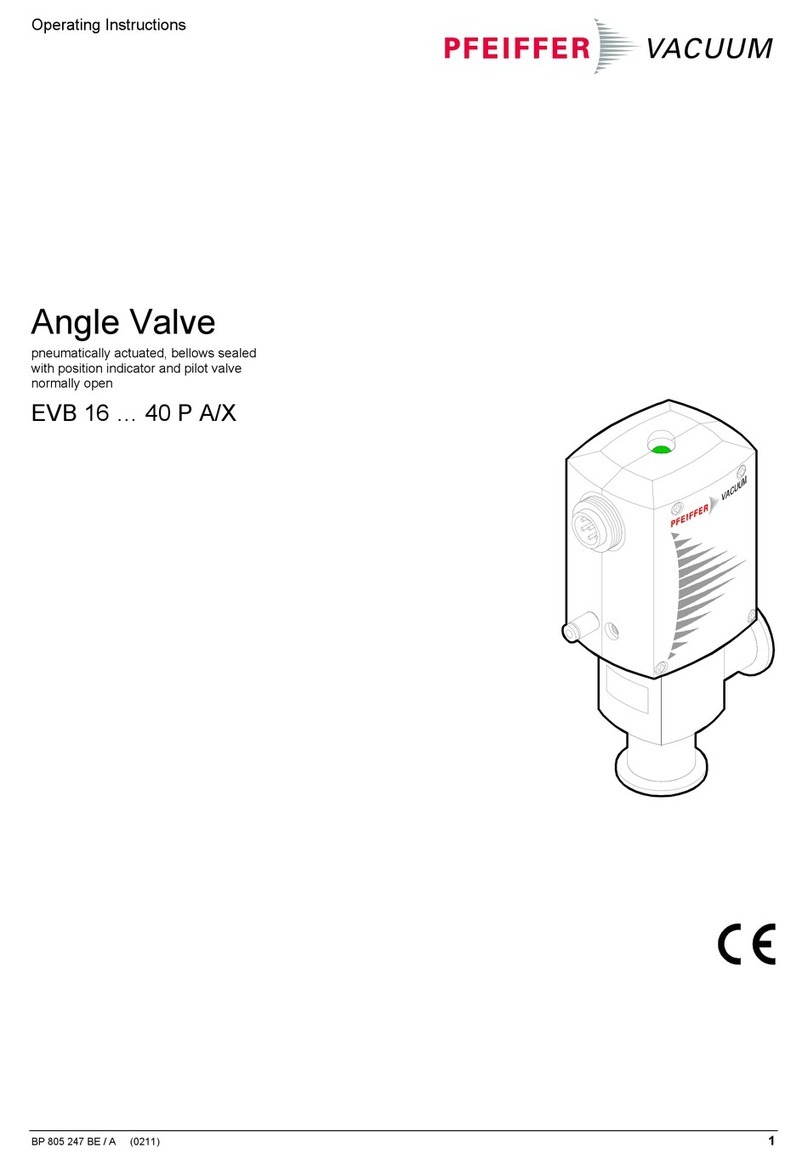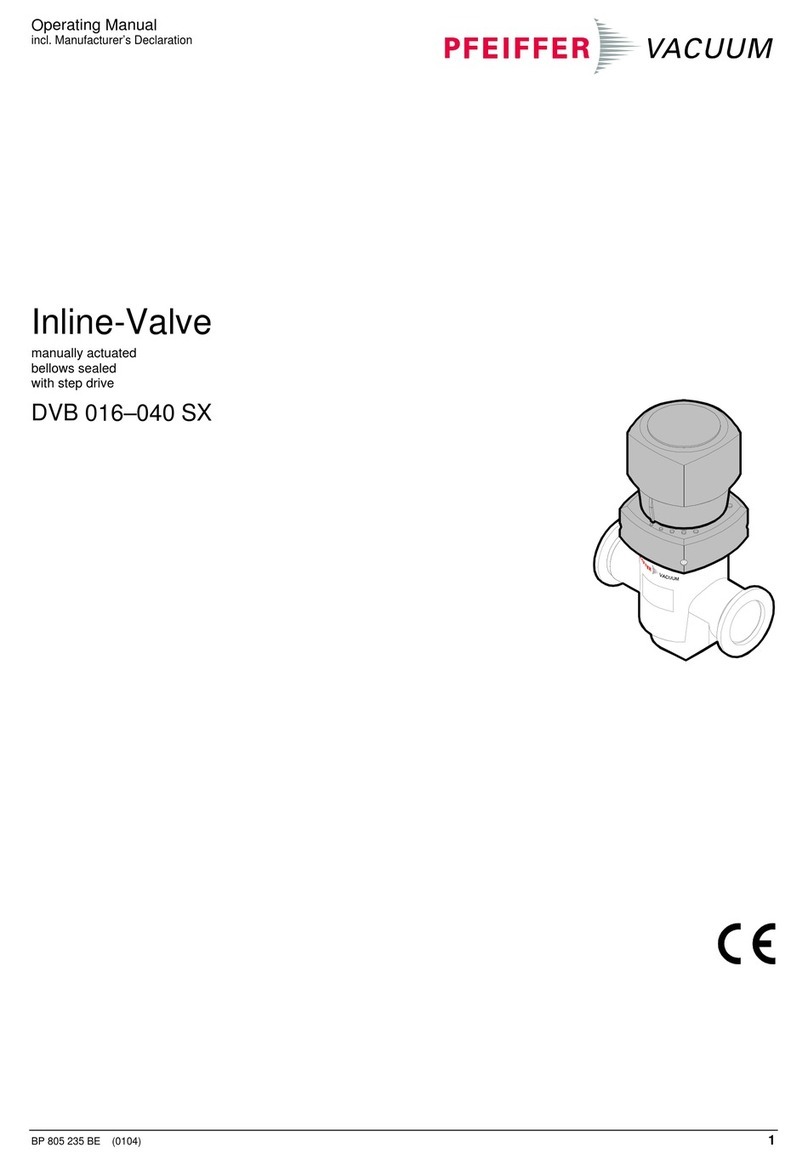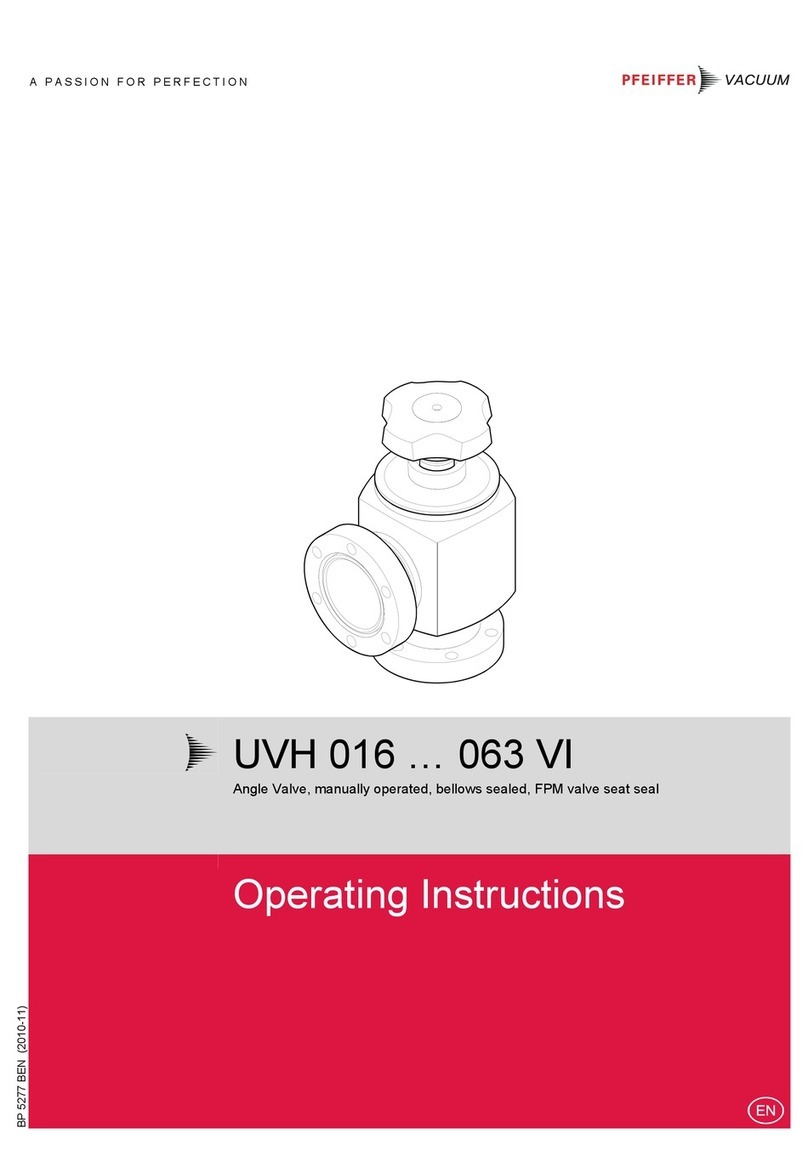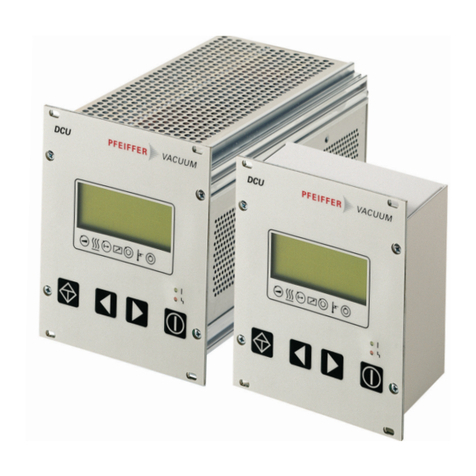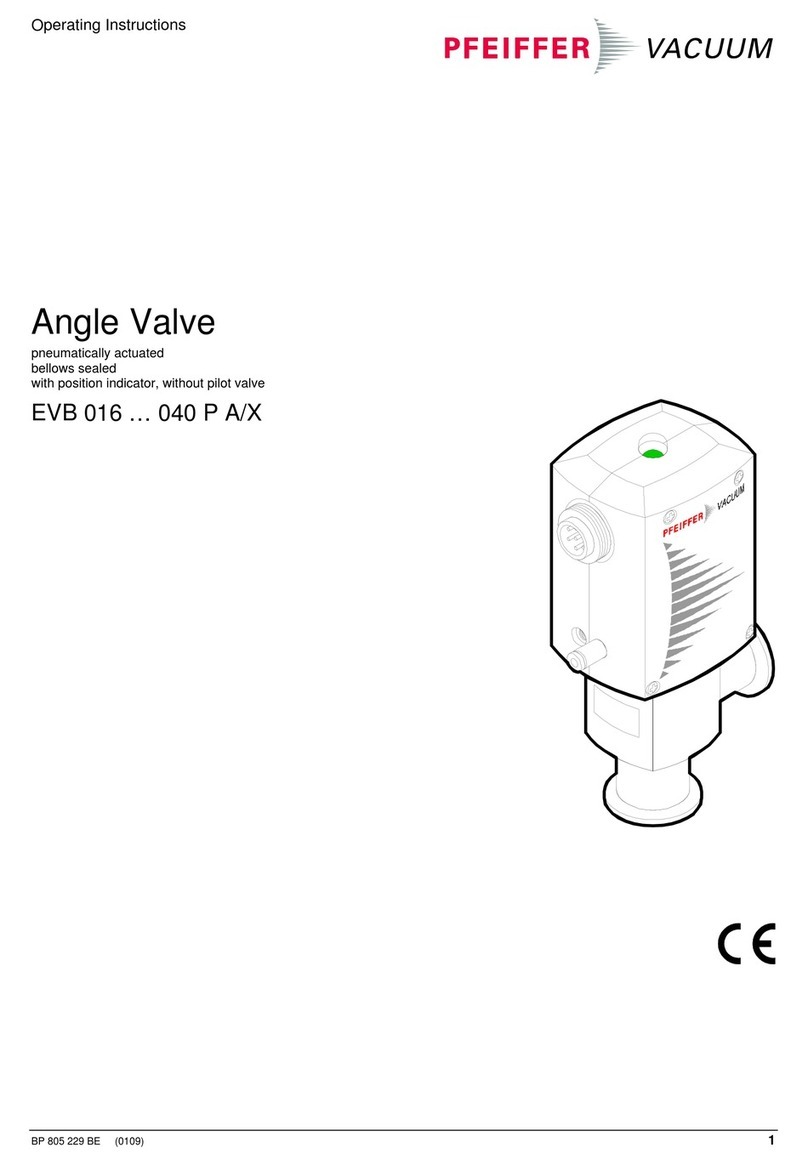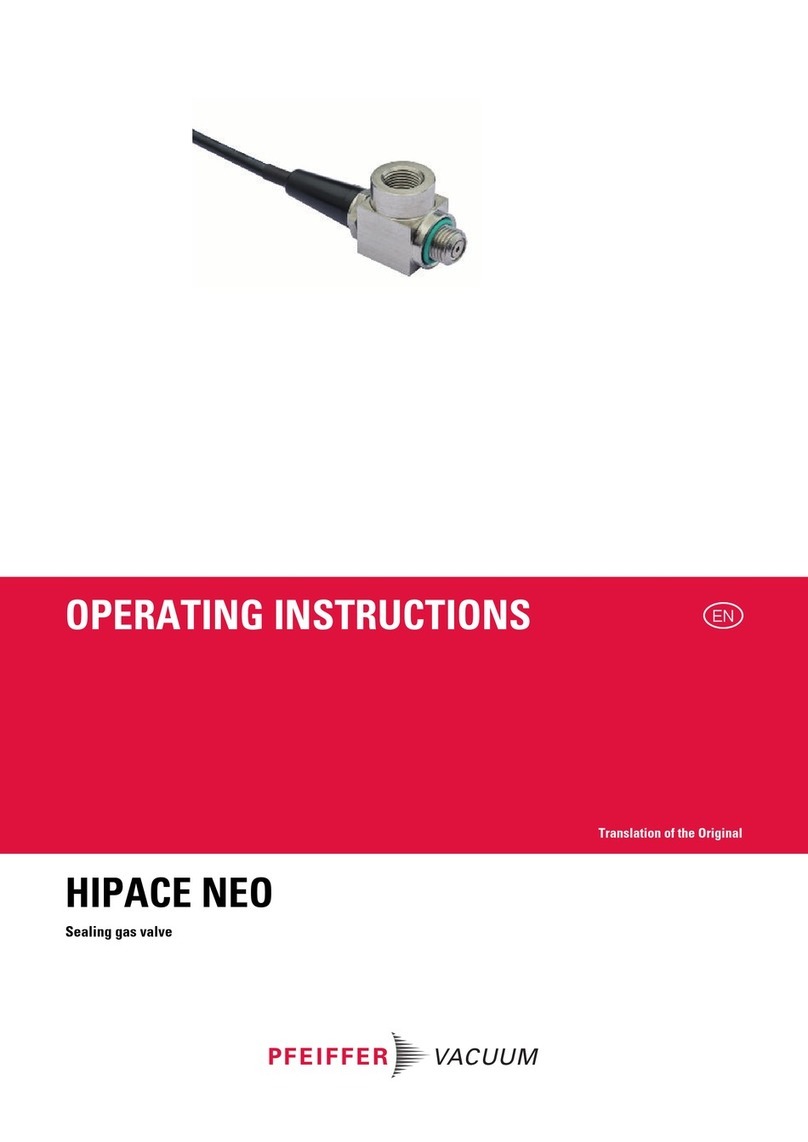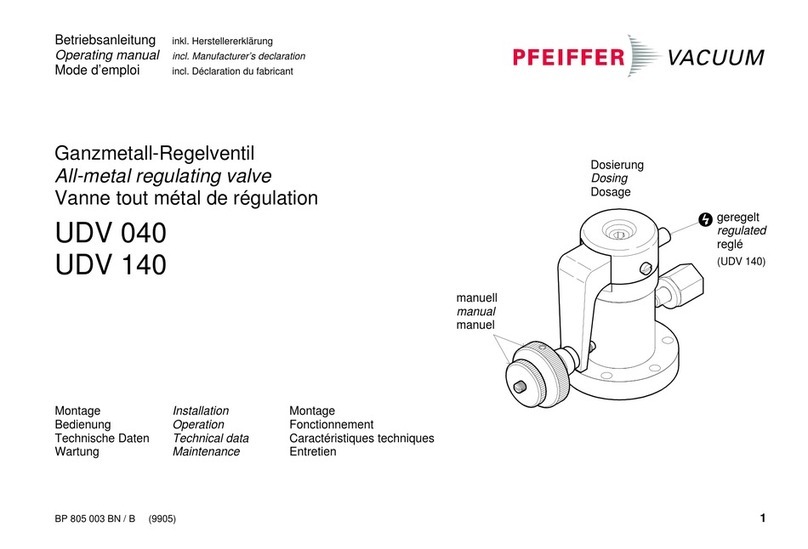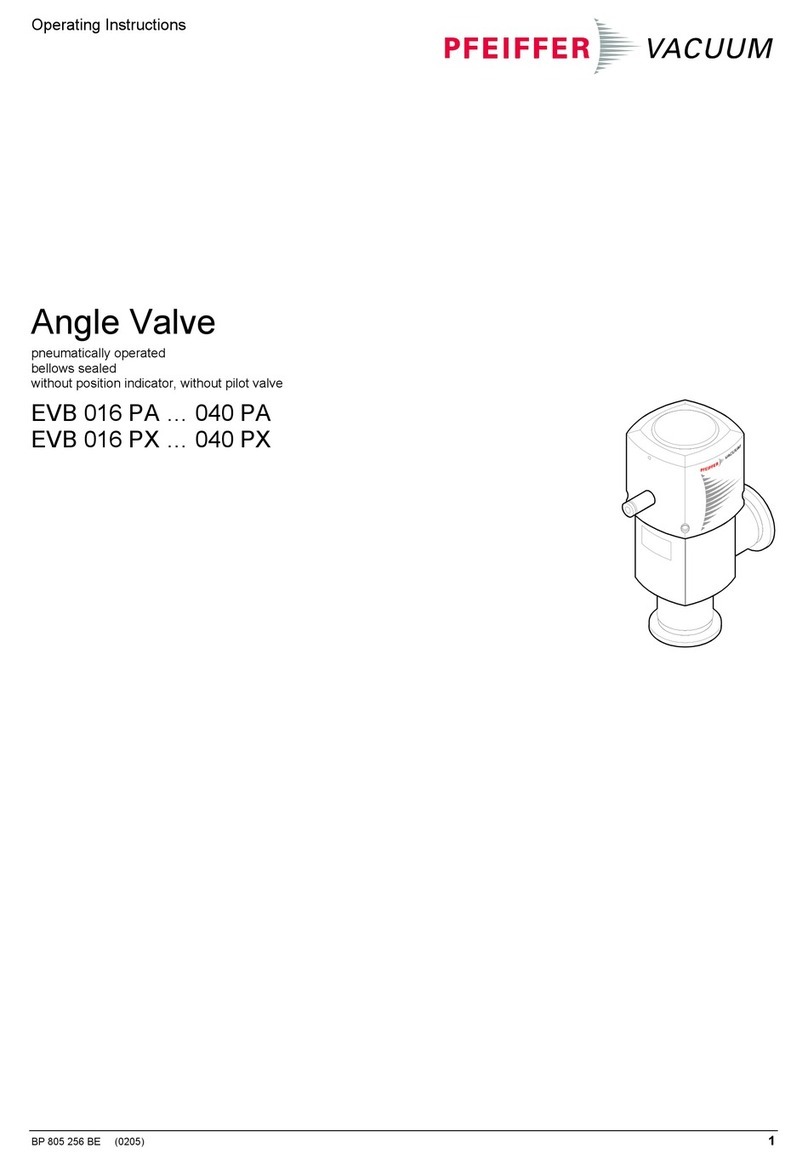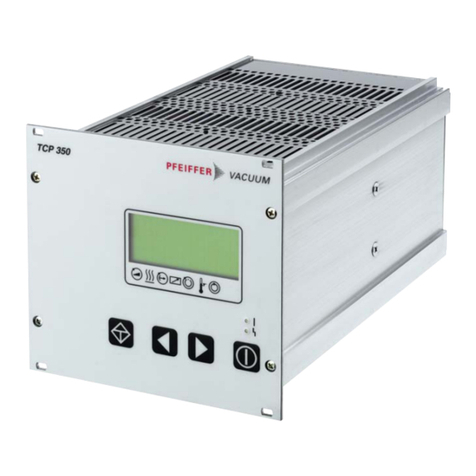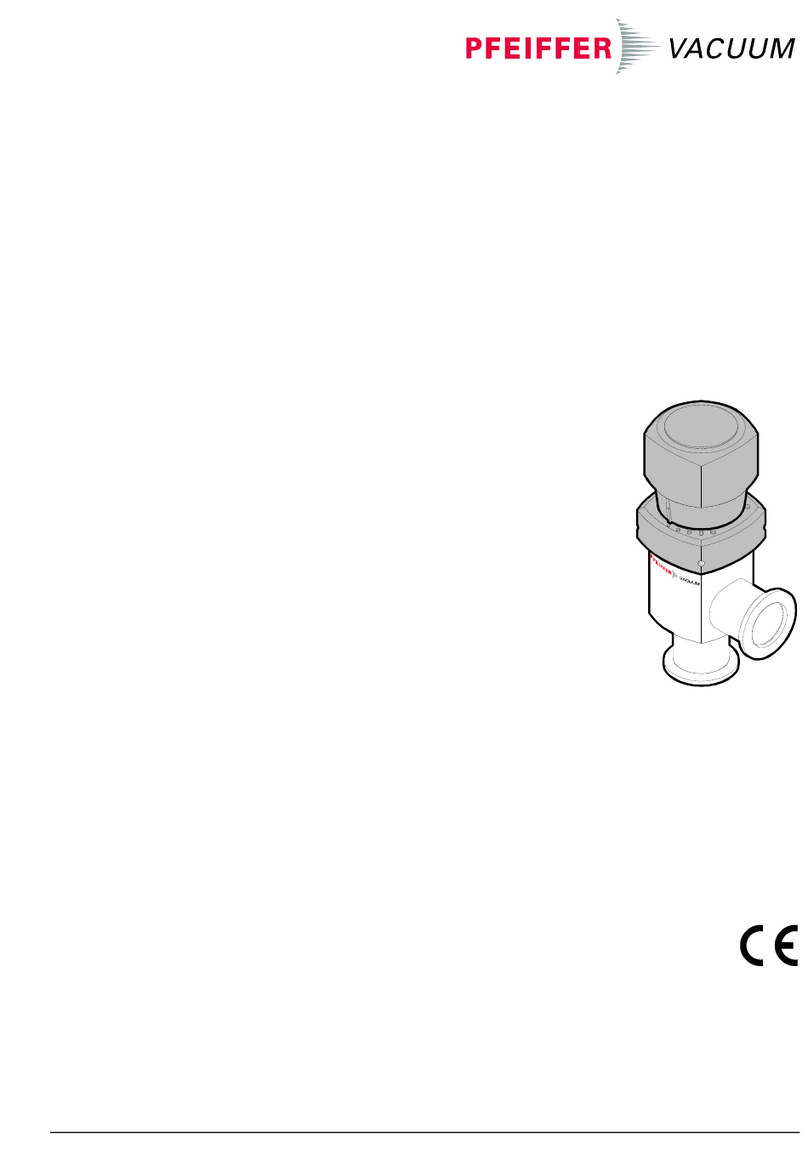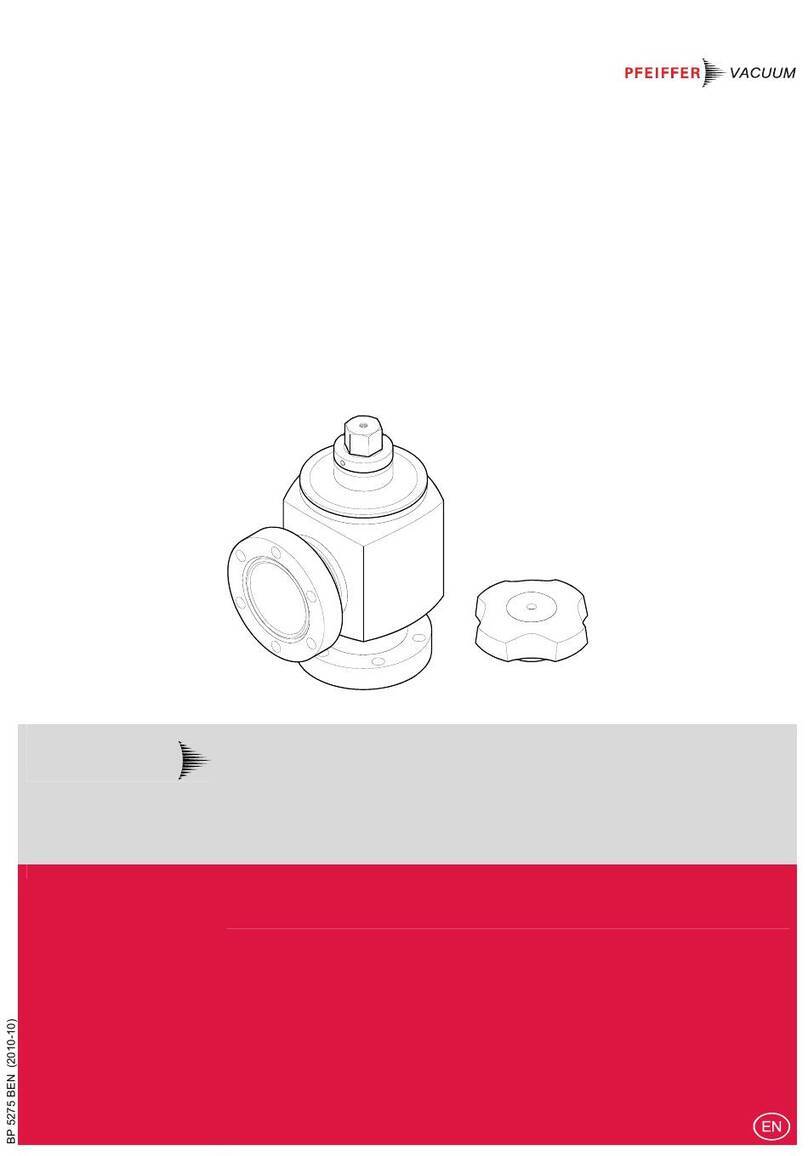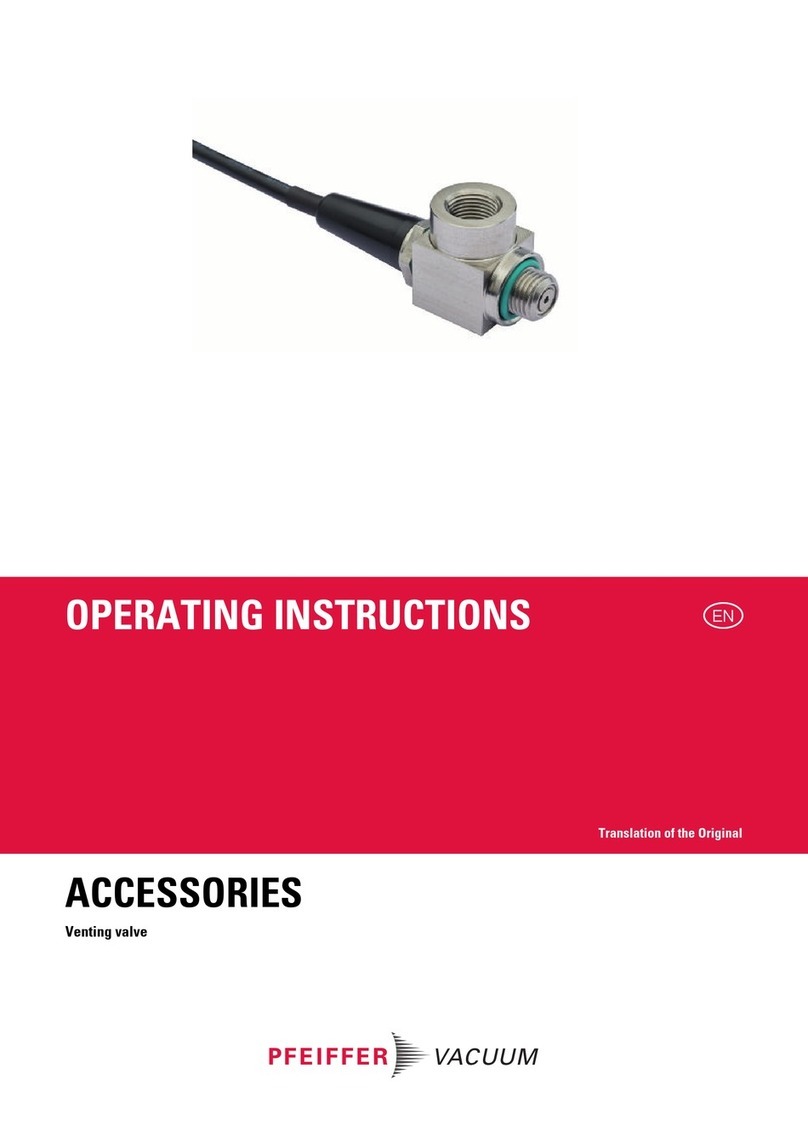
BP 5276 BEN (2010-10)
A PASSION
FOR PERFECTION
UVH 016 … 063 CU
All-Metal Angle Valve, manually actuated, bellows
sealed, metal valve seat seal
Instruction Sheet
Produktidentifikation
In all communications with Pfeiffer Vacuum, please specify
the information on the product nameplate. For convenient
reference copy that information into the space provided
below.
Typ:
No:
F-No:
Pfeiffer Vacuum, D-35614 Asslar
Validity
This document applies to products with the following part
numbers:
PFK32032 (UVH 016 CU DN 16 CF)
PFK52032 (UVH 040 CU DN 40 CF)
PFK62032 (UVH 063 CU DN 63 CF)
The part number (No) can be taken from the product name-
plate.
If not indicated otherwise in the legends, the illustrations in
this document correspond to the valve with the nominal
diameter DN 40. They apply to valves with other nominal
diameters by analogy.
We reserve the right to make technical changes without prior
notice.
Intended Use
The product is used as shut-off valve for XHV and UHV appli-
cations. It can be baked out at 300 °C. The welded housing
is suited for high-purity and toxic gases.
Description
Valve plate
Bellows
Valve plate base
CF flange
DN 16 ... 63 CF-R
(rotatable)
Rotary knob
(enclosed)
Mark on the valve
housing
Leak detection bore
Adjustment ring
Hex socket set
screw
Sealing edge
Safety
Symbols Used
DANGER
Information on preventing any kind of physical injury.
WARNING
Information on preventing extensive equipment and en-
vironmental damage.
Caution
Information on correct handling or use. Disregard can lead
to malfunctions or minor equipment damage.
Personnel Qualifications
Skilled personnel
All work described in this document may only be carried
out by persons who have suitable technical training and
the necessary experience or who have been instructed by
the end-user of the product.
General Safety Instructions
•Adhere to the applicable regulations and take the nec-
essary precautions for the process media used.
Consider possible reactions between the materials
(→"Technical Data") and the process media.
•Adhere to the applicable regulations and take the nec-
essary precautions for all work you are going to do and
consider the safety instructions in this document.
•Before beginning to work, find out whether any vacuum
components are contaminated. Adhere to the relevant
regulations and take the necessary precautions when
handling contaminated parts.
Communicate the safety instructions to all other users.
Liability and Warranty
Pfeiffer Vacuum assumes no liability and the warranty be-
comes null and void if the end-user or third parties
•disregard the information in this document
•use the product in a non-conforming manner
•make any kind of interventions (modifications, alterations
etc.) on the product
•use the product with accessories not listed in the corre-
sponding product documentation.
The end-user assumes the responsibility in conjunction with
the process media used.
Failures due to contamination or wear and tear, as well as
expendable parts (e.g. seals), are not covered by the
warranty.
Technical Data
Connection flanges, rotatable
UVH 016 CU
UVH 040 CU
UVH 063 CU
DN 16 CF-R
DN 40 CF-R
DN 63 CF-R
Installation angle any
Flow direction any
Tightness 1×10-12 mbar l/s
Pressure range (absolute)
Bursting pressure
1×10-11 mbar … 4 bar
8 bar
Conductance 1)
UVH 016 CU
UVH 040 CU
UVH 063 CU
3 l/s
38 l/s
100 l/s
Temperatures
Ambiance
Operation
Bakeout
(without rotary knob, closed,
pressure in vacuum system
<1×10-4 mbar or vacuum
system vented with inert gas)
Rotary knob
Continuous
Temporary
Storage
Temperature increase
UVH 016 CU
UVH 040 CU
UVH 063 CU
0 °C … 55 °C
≤300 °C
≤300 °C
≤80 °C
80 … 110 °C
+5 … +45 °C
-15 … +45 °C 2)
≤4 °C/minute
≤4 °C/minute
≤2 °C/minute
Closing torque
UVH 016 CU
UVH 040 CU
UVH 063 CU
2 … 10 Nm
8 … 30 Nm
30 … 60 Nm
Service life of sealing plate
(cold closing operations)
1000 cycles 3)
Lift (opening)
UVH 016 CU
UVH 040 CU
UVH 063 CU
12 mm
23 mm
33 mm
Materials
Housing / spindle flange
Spindle
Bellows
Valve plate base
Valve plate
Forming ring
Sealing plate
Rotary knob
stainless steel 1.4301
CuSn8 2.1030.26
stainless steel 1.4541
st. steel 1.4301 ESU
stainless steel 1.4301
copper
PA 15% GF
Weight
UVH 016 CU / UVH 040 CU
UVH 063 CU
0.4 kg / 2.0 kg
5.0 kg
1) For air with molecular flow.
2) Ambiance free of condensable gases.
3) Cycles without expandable parts (seals) and under clean
operating conditions.
If the valve is operated under harsh or dirty conditions, it
should be cleaned / maintained before the specified service
time to maintenance has been reached.
Dimensions [mm]
69.6
25.6
88.2
AF 8
38
38
35
ø 62
DN 16 CF-R
(rotatable)
UVH 016 CU
DN 16 CF-R
(rotatable)
119.4
Spindle lift
15
